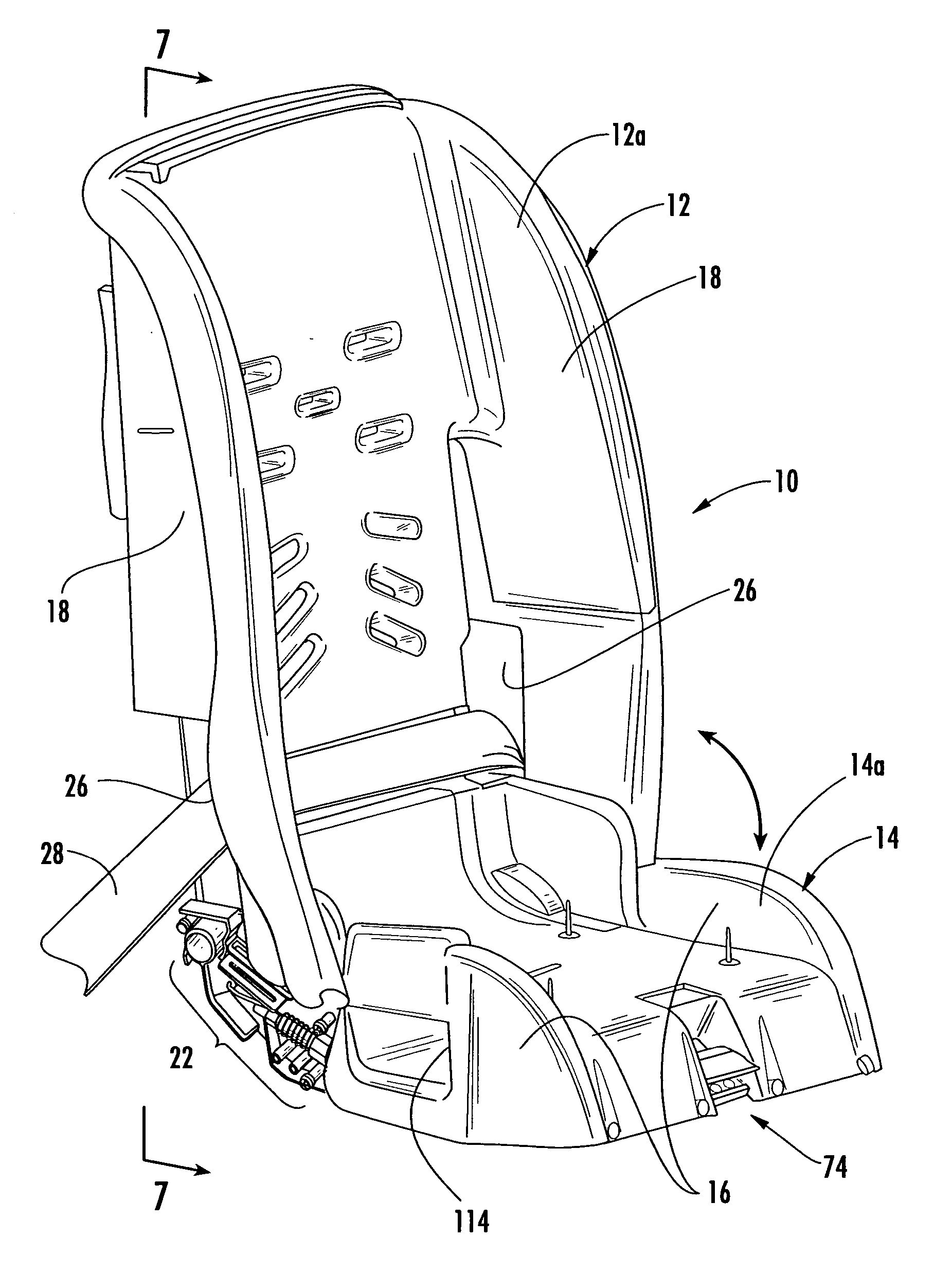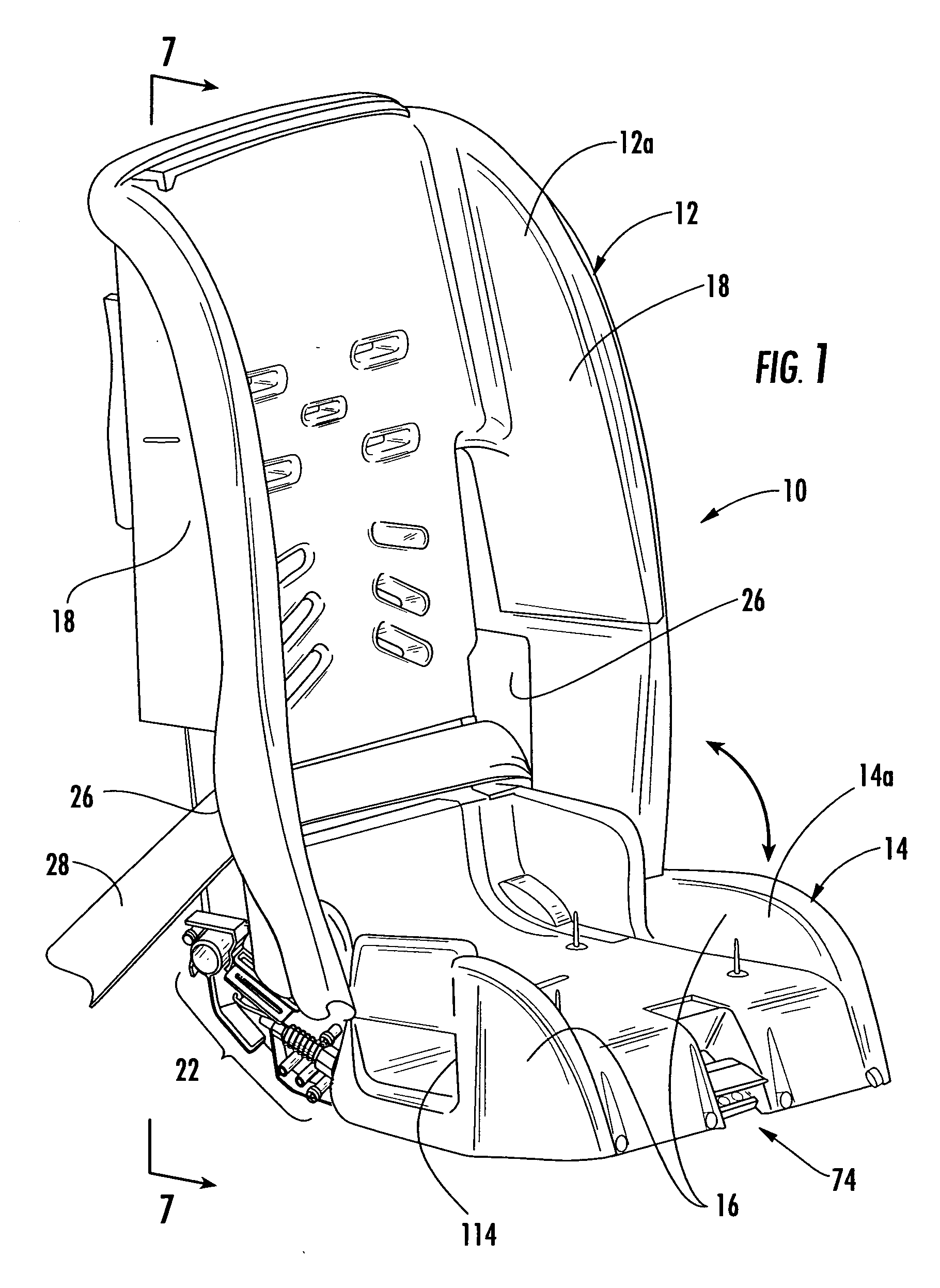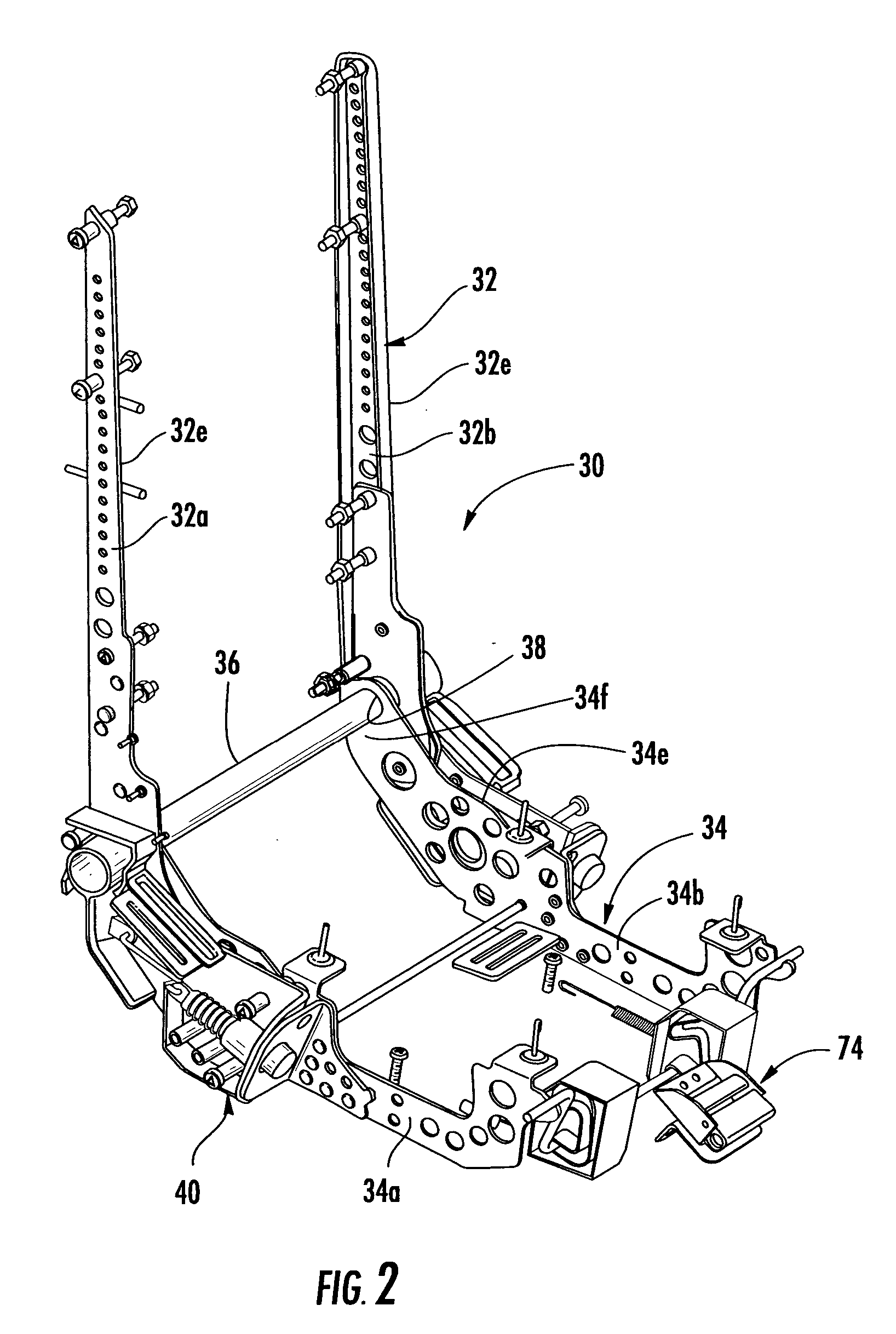Compact folding seat
- Summary
- Abstract
- Description
- Claims
- Application Information
AI Technical Summary
Benefits of technology
Problems solved by technology
Method used
Image
Examples
Embodiment Construction
[0049] Referring first to FIG. 1, a partial cut-away perspective view of the folding child vehicle seat 10 of the present invention. The seat 10 includes a seat back 12 and a seat bottom 14 pivotally connected thereto. This enables the seat bottom 14 to fold up to the seat back 12, as indicated by the arrow.
[0050] In general, the seat of the present invention includes a frame structure, as will be described below, and housing 12a installed thereon to give the seat 10a desired ergonomic seat. The housing 12a for the seat back 12 is in the form of a seat cover while the seat bottom 14 also includes a similar housing or cover 14a thereon. The covers 12a and 14a can be made out of any material but are preferably made of injection molded plastic. These covers 12a and 14a are shown in a given ergonomic shape but any desired shape and size can be employed and still be within the scope of the present invention. It is preferred to employ well known child vehicle seat configurations which ar...
PUM
 Login to View More
Login to View More Abstract
Description
Claims
Application Information
 Login to View More
Login to View More - R&D
- Intellectual Property
- Life Sciences
- Materials
- Tech Scout
- Unparalleled Data Quality
- Higher Quality Content
- 60% Fewer Hallucinations
Browse by: Latest US Patents, China's latest patents, Technical Efficacy Thesaurus, Application Domain, Technology Topic, Popular Technical Reports.
© 2025 PatSnap. All rights reserved.Legal|Privacy policy|Modern Slavery Act Transparency Statement|Sitemap|About US| Contact US: help@patsnap.com



